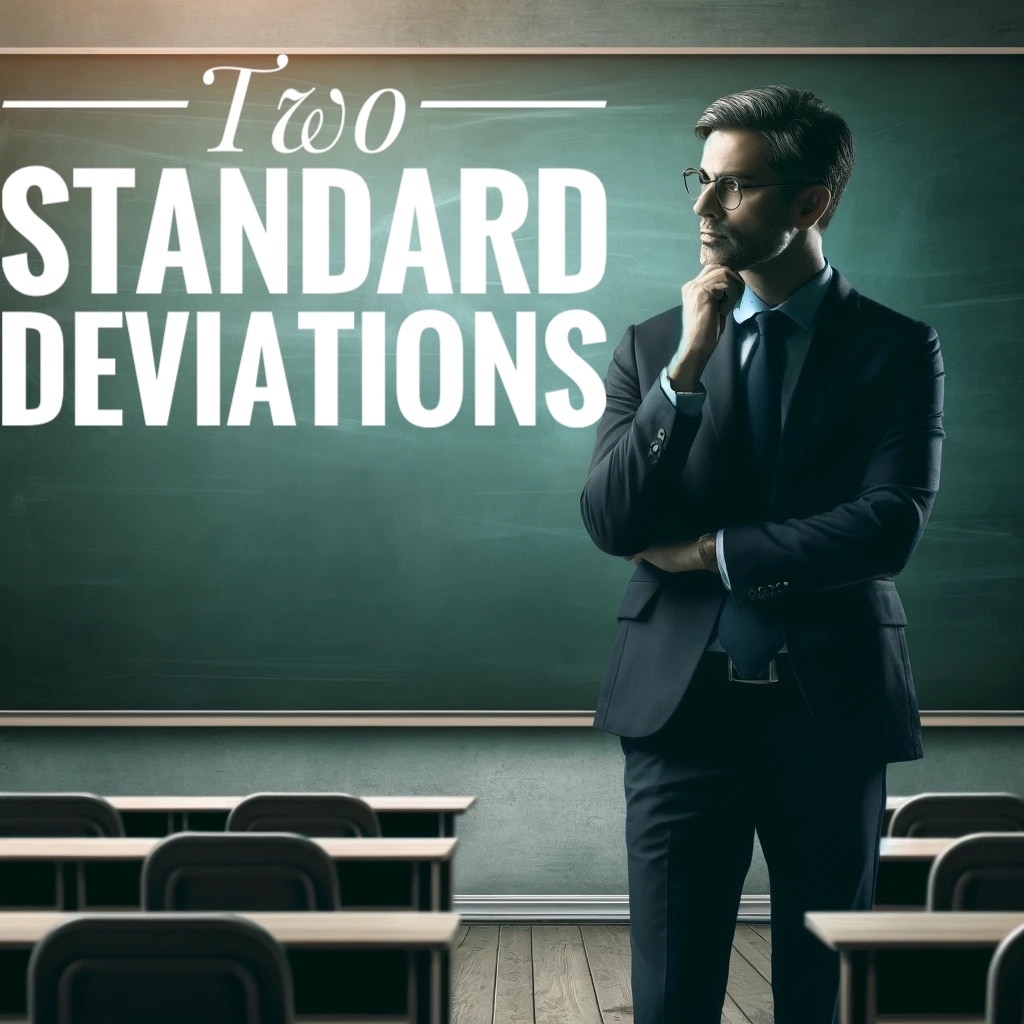AI, tutoring, and mastery learning are topics that have dominated my professional interests for years. Obviously, AI has been added recently, but the other topics have been active topics of my scholarship since the late 1960s. I have mostly treated these topics in isolation, but they can be interrelated and recent efforts have drawn attention to potential interconnections. I will end this post by providing my own take on how these topics now can be considered in combination.
Aptitude and mastery learning
I think the history of the interrelationship of these two concepts is important and not appreciated by current researchers and educational innovators. At least I do not see an effort to connect with what I think are important insights.
Aptitude and how educational experiences accommodate differences in aptitude don’t seem to receive a lot of attention. I see a lot of references to individual interests and perhaps existing knowledge under the heading of personalization, but less to aptitude. A common way of defining aptitude is as the natural ability to do something. When applied to learning, this definition becomes controversial. It may be the word “natural”. The idea of “natural” as biologically based is probably what causes the problems. You can kind of see what I mean by a messy idea if the word intelligence is equated with “natural”. Immediately those who disagree with the basic idea begin complaining about the limitations of intelligence tests and and the dangers of attaching labels to individuals. I can understand the concerns and potential abuses, but I have never thought the solution was to ignore what any educator faces in the variability in the students they work with. What way of thinking about this variability would be helpful?
As I was taught about intelligence and intelligence testing and learned about the correlates with academic achievement, I encountered a way of thinking I found helpful and useful. Perhaps aptitude could be thought of as speed of learning. This was the proposal of John Carroll. Instead of aptitude predicting differences in how much would be learned, Carroll proposed that differences in aptitude predicted how long most learners would take to grasp the same learning objectives. The implications of this perspective seem extremely important. Carroll argued that traditional educational settings, with their fixed timeframes for learning, often disadvantaged students with lower aptitude. In these settings, students with higher aptitude tend to learn more within the limited time available, while those who require more time to process information might fall behind. This disparity has an important secondary implication. Learning is cumulative with existing knowledge influencing future understanding and learning efficiency. Put another way teachers will likely recognize, missing prerequisites make related information difficult to understand. So, it is not just differences in aptitude that matter, but differences in aptitude. within a fixed learning environment (time and methods) that compounds learning speed and existing knowledge.
The connection with a traditional way of defining aptitude such as intelligence may not jump out at you, but consider the classic IQ=MA/CA so many learned in Intro to Psych courses. Think of it this way. CA is chronological age or within my way of explaining aptitude the time available for learning. MA is mental age or how much an individual of a given age knows. The quotient ends up as a way of learning efficiency or amount learned per unit of time.
Anyway, assuming this theoretical notion offers a reasonable way of understanding reality, what does this mean for educators and what actions seem reasonable responses?
Dealing with differences in rate of learning
When I present this to future teachers, I propose that educational settings do make some accommodations to this perspective. At the extreme, a few students might be required to repeat a grade. Schools provide extra help and time in the form of pull-out programs and other types of individual help. Schools used to and to some extent still group students based on performance/ability to match the rate of progress to instruction (e.g., tracking, ability grouping). While helpful, these programs do not stem the increasing variability in performance across elementary school grades. Perhaps once students get to high school variability is accommodated by the selection of different courses and the pursuit of different learning goals, but even if this is the case there are long-term consequences from the early learning experiences. How is motivation impacted by the increasing frequency of failure and related frustration? Are there practical ways to claw your way back from early failures once you fall behind?
Mastery learning
In the early 1970s, I became interested in two instructional strategies labeled mastery learning. These approaches proposed ways to respond to variability in the rate of learning. I will summarize these as Bloom’s Group-Based Method and Keller’s Personalized System of Instruction. Bloom was and continues to be a big name in education and gets a lot of attention. I see Keller as developing a system more attuned to the application of technology and AI. Both offer concrete proposals and encouraged a lot of research. The volume of research and related meta-analyses offer much to present efforts that lack the same detailed analyses (see references to the work of Kulik and colleagues).
Bloom’s Group-Based Mastery?—?In the late 1960s, Benjamin Bloom, an educational psychologist, considered the optimal approach to individualized education. Bloom concluded that individual tutoring yielded the best results for learners. Bloom’s research indicated that tutoring could produce significant improvements in student achievement, with 80% of tutored students achieving a level of mastery only attained by 20% of students in traditional classroom settings. Bloom recognized the impracticality of providing one-on-one tutoring for every student. Instead, he challenged researchers to explore alternative instructional strategies capable of replicating the effectiveness of individual tutoring. This has been described as the 2-sigma challenge based on the statistical advantage Bloom claimed for tutoring.
Bloom’s (1968} approach to mastery learning was group-based. A group of learners would focus on content (e.g. chapter) to be learned for approximately a week and would then be administered a formative evaluation. Those who passed this evaluation (often at what was considered a B level) would continue to supplemental learning activities and those who did not pass would receive remediation appropriate to their needs. At the end of this second period of instruction (at about the two-week mark), students would receive the summative examination to determine their grades. Those who were struggling were provided more time on the core goals. Yes, this is a practical more than a perfect approach as there is no guarantee that all students will have mastered the core objectives necessary for future learning by the end of the second week. A similar and more recent approach called the Modern Classroom Project categorizes goals as “need to know”, “good to know” and “aim to know”. The idea is that not all possible goals can practically be achieved.
Keller’s Personalized System of Instruction?—?Fred Keller, drawing inspiration from Carroll’s work, developed the Personalized System of Instruction (PSI) in 1968. Keller proposed that presenting educational content in written format, rather than through traditional lectures, could provide students with the flexibility to learn at their own pace. PSI utilizes written materials, tutors, and unit mastery to facilitate learning. Students progress through units of instruction at their own pace, revisiting concepts and seeking clarification as needed when initial evaluations show difficulties. This self-paced approach enables students to dedicate additional time to challenging concepts while progressing more quickly through familiar material. The focus on written materials that could be used by individuals allowed Keller’s approach to focus more on individual progress and it was not necessary that a group be kept to a common pace of progress.
PSI utilizes frequent assessments to gauge student understanding and identify areas requiring further instruction. These assessments are non-punitive, meaning they do not negatively impact a student’s grade. Instead, assessments provide feedback that guides students toward mastery of the material. If a student does not demonstrate mastery on an assessment, they receive additional support and instruction tailored to their specific needs, before retaking the assessment.
In Keller’s model, tutors play a crucial role in evaluating student progress, offering personalized feedback, and providing clarification or additional instruction when needed. The role of the tutor could be fulfilled by various individuals, including the teacher, teaching assistants, or even fellow students who have already achieved mastery ofthe subject matter. The teacher’s role in PSI shifts from delivering lectures to designing the curriculum, selecting and organizing study materials, and providing individualized support to students.
Adapting old models to modern technology
While mastery learning predates the widespread adoption of technology in education, technology has significantly enhanced its implementation. Meta-analyses generally found that mastery approaches offered achievement benefits when compared with traditional instruction. My interpretation of why interest in the original approaches declined was that interest waned not because of effectiveness, but because of practicality. Mastery approaches were simply difficult to implement. Online platforms and educational technologies can facilitate personalized learning experiences by delivering content, tracking student progress, and providing individualized feedback and support. Technology can also automate many of the administrative tasks associated with mastery learning, such as grading assessments and tracking student progress, freeing up educators to focus on providing individualized support. Both the Bloom and Keller approaches could be implemented making use of technology, but the greatest benefit would seem to be to the Keller approach.
AI, tutoring, and mastery learning
Recent mention of mastery learning (Kahn, Archambault and colleagues) do so in combination with tutoring. Bloom originally proposed that his mastery approach was his example that could be related to his two-sigma challenge. However, group-based mastery was compared to and not integrated with tutoring. The number of professionals working in schools is not increasing and if anything class sizes are increasing. Greater individualization only increases the importance of individual monitoring and attention and the AI as tutor can reduce some of the demands on the limited time of professional educators.
Archambault and colleagues summarize the complication posed by the seemingly conflicting education goals of individualized learning and the needs for interaction and socioemotional learning. I have included the following quote from their work.
For example, cultivating classroom community through building relationships online and having students work together to develop social interaction at a distance may have competing interests with personalizing instruction such that each student can work at their own pace and through their own path to master course content.
Summary
Mastery learning is gaining increasing attention among educators seeing the value of applications of technology to individualize learning. This post summarizes the history of mastery instructional methods and offers other insights into how old ideas may be practically implemented with technology.
I have written multiple posts about mastery learning and current efforts to apply mastery principles. Reviewing some of these posts may be valuable if this summary sparks your interest.
References:
Archambault, L., Leary, H., & Rice, K. (2022). Pillars of online pedagogy: A framework for teaching in online learning environments. Educational Psychologist, 57(3), 178–191. https://doi.org/10.1080/00461520.2022.2051513
Benjamin, S., Dhew, E., & Bloom, B. (1968). Learning for mastery. Eval. Comment, 1, 1–1
Kahn, S. (2024). Brave new words: How AI will revolutionize education and what that’s a good thing. Penguin Random House.
Keller, F. S. (1968). “Good-bye teacher”. Journal of Applied Behavior Analysis, 1, 79–89
Kulik, C., Kulik, J. & Bangert-Drowns, R.L. (1990). Effectiveness of mastery learning programs: A meta-analysis. Review of Educational Research, 60, 265–299.
Kulik, C., Kulik, J. & Bangert-Drowns, R.L. (1990). Is there better evidence on mastery learning? A response to Slavin. Review of Educational Research, 60, 303–307.
Kulik, J. A., Kulik, C. L. C., & Cohen, P. A. (1979). A meta-analysis of outcome studies of Keller’s personalized system of instruction. American Psychologist, 34(4), 307- 318
139 total views




You must be logged in to post a comment.